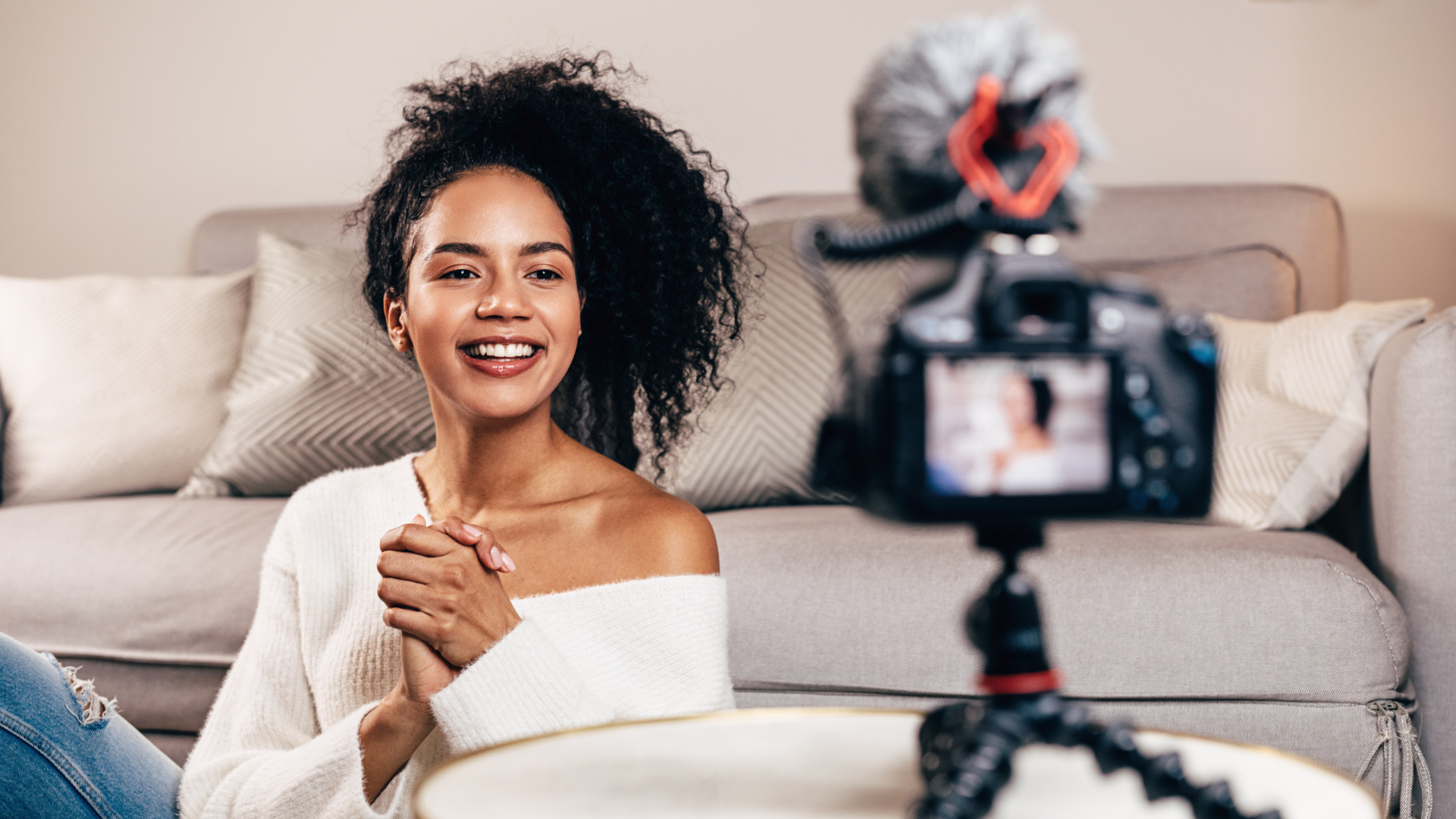Since the emergence of social media marketing, we have seen a shift in how we rely on influencers when it comes to brand endorsements and marketing. Using insights from our data partner GWI, we explore six ways influencers are showcasing their adaptability and authenticity.
#1 Live Streaming – Facilitating social commerce
Livestream commerce has surged recently, sweeping over the Chinese social media landscape in the process. Livestream commerce could occupy up to 20% of China’s total e-commerce sales in 2022, almost doubling its tally from 2020.
While fashion and beauty remains the most popular content vertical for influencers, 2021 encouraged a significant uptick in influencers producing home-based content, with food and beverage recording an 87% increase year-on-year. Other fast-growing content verticals include business and finance, family and sports.
What next?
Brands can engage influencers for livestream commerce on social media platforms such as Instagram and TikTok, in order to expand their consumer base. Influencers have strong impact on their fans’ purchase decisions, especially when they do product testings and recommendations.
For example, Mashable partnered with America’s Test Kitchen and chef David Vos launched a cooking show streamed live on Periscope. Touted as the “world’s biggest dinner party,” the publisher leaned into the popularity of how-to tutorial videos, while applying the excitement of live video to a genre that’s traditionally pre-taped. Mashable drummed up interest ahead of time by promoting each episode on other channels, including tweets, Facebook events, and their own website. Once they were live, representatives from both Mashable and America’s Test Kitchen were on hand to answer user questions on Twitter and Periscope and help boost the video’s discoverability.
#2 Nano and Micro Influencers
In APAC, especially in Southeast Asia, micro-influencers are most in demand. Nearly 80% of influencers in Asia are micro-influencers. Consumers are most drawn to relatability. Influencers with smaller audiences make consumers feel as though they’re following someone who’s not posting for the sponsorship, but rather because they truly believe in the product or experience.
Nano and micro influencers have an average of 4% engagement rate compared with macro influencers who have an average engagement rate of 1.2%.
What next?
If the goal of brands’ campaign is to drive engagement and conversion, nano and micro influencers would be more effective compared to macro influencers. Nano and micro influencers have a hyperlocal impact on their communities because they make their product recommendations which seem like they’re coming from a friend or trusted confidante.
For example, with an 8% engagement rate, Xenia Tan is a perfect example of the kind of authentic creator viewers are craving. Her funny commentary and #nofilter style make her a popular favourite with both viewers and brands.
View this post on Instagram
#3 Video Content – Shifting partnerships
In 2021, brands and creators use video to connect with their audience on a deeper level, spotlight products, and raise awareness about causes they care about.
Video content typically performs best with most algorithms, as it captures a viewer’s attention for longer. Videos on Instagram generate 10x more engagement than other content types. Instagram exemplifies as the channel that influences the most shoppers in Asia, with 72% of its users making a purchase decision based on something they saw from the app on a reel.
What next?
With the growing popularity of TikTok and Instagram Reels, short form vertical videos are rapidly becoming the must-have format for influencer marketing. With Instagram’s focus on video, it’s highly likely that Instagram will move towards a Reels-first approach. This could mean that when users open up the Instagram app, they’ll see the Instagram Reels explore page first with the option to switch over to the main feed.
Creators are also able to add the product sticker where brands can tag products from their shop directly on the video on Instagram Reels – further streamlining the checkout process.
#4 Cross Channel Strategy
The average internet user now has 7 social media accounts. Cross channel marketing can help increase brand ubiquity, thus creating familiarity and fosters trust in audiences.
Amongst Gen Z in 2021, there was a greater emphasis on following preferred creators across multiple platforms. Although many creators have a favourite social network, they typically operate across multiple platforms. While this isn’t new, the difference now is that these creators have “super fans” who interact with them everywhere they appear.
What next?
Because many digital influencers have already cultivated immense followings across several platforms, most bloggers also have a large following Instagram. For example, many Vine stars are now developing content for audiences on live-streaming platforms like Facebook Live. Partnering with top Instagrammers, YouTubers, Snapchatters, or bloggers can help companies powerfully expand their reach to new platforms and networks at rates oftentimes much faster and involving lesser resources needed than growing their own following on each respective channel.
Further, influencers are being used as part of TVCs, OOH, display, POS, website and email marketing strategies. This is due to the authenticity of such channels, the pace at which content is made, and most importantly cost effectiveness.
#5 Wellness and Fitness Content
Over two-thirds of influencers who began posting about wellness brands during the pandemic were still posting about these brands in Fall 2021, while 69% of influencers who started endorsing fitness brands during the pandemic continued to do so.
Not only is this trend here to stay, but it’s growing exponentially with the likes of social media influencers latching on and reaping the benefits. Forbes is acknowledging them as recently becoming “an anomaly in the influencer business,” mainly because they get profits direct from consumers, which differs from fashion or travel influencers.
What next?
Brands should consider to cooperate with wellness and fitness influencers to show the positive and healthy side of the brands. Content creators’ sustained investment in their physical and mental well-being throughout 2021 suggests that enthusiasm for health and wellness brands is unlikely to fade in 2022.
For example, Adriell Mayes recently has partnered with Vivobarefoot, Kettlebell Kings, and Equinox Gym, to drive their brand outreach. He is a NASM-certified personal trainer who specializes in pain-free performance. In the past 90 days, Mayes has over 180k followers on Instagram with a tremendous growth rate of 38% and his TikTok followers has increased to over 20k with a growth rate of 5%.
View this post on Instagram
#6 Authenticity Over Perfection
Creators are shifting away from the perfectly curated feed aesthetic and choosing to share less filtered and more in-the- moment photos of their lives.
Nichole Ciotti, co-founder of design app, Storyluxe, thinks this trend will continue evolving: “In the beginning, everyone was forced to be super polished. Now, after some time has passed, people are finding their true voices on social.”
What next?
Brands should partner with influencers who know how to create ads and sponsored content that don’t look like ads. Focus on the creators who foster real relationships with their community and offer valuable authentic content.
For example, Emily Mariko, who has 8.9 million followers on TikTok, whose simple videos frequently gain millions of views. Her videos usually showcase the process from purchasing ingredients in the supermarket to turning them into delicious dishes. There are no filters or special effects added in the video, but everything is very close to life.
@emilymariko♬ original sound – Emily Mariko
Curious about the trends impacting your brand? Get in touch with our data and insights specialists here.




